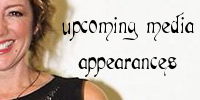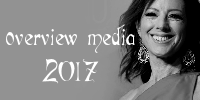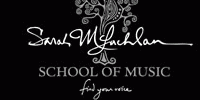May 06, 2011
Publication title: The Star, vol. -, Iss. -, pg. –
Place: Unknown
Writer: Michael Crabb
Sarah McLachlan’s life in balletic form
Choreographed by Jean Grand-Maître. Until May 7 at Southern Alberta Jubilee Auditorium, Calgary; 403-245-4549; May 12 to 14, Northern Alberta Jubilee Auditorium; 780-428-6839 or www.albertaballet.com
Sarah McLachlan has made it official. The normally humble Canadian singer/song writer adores Fumbling Towards Ecstasy — not her breakthrough 1993 album, which she has every right to admire, but a dance spectacle of the same name that marks the third pop-driven venture masterminded by Alberta Ballet’s artistic director Jean Grand-Maître.
At a media conference following Thursday night’s sold-out world premiere at the 2,500-seat Jubilee Auditorium in Calgary, McLachlan said she found it “overwhelming beautiful” to see her music transformed “into a physical manifestation of its emotions,” which pretty much sums up what the ballet achieves.
Although Grand-Maître has given his latest ballet a quasi-narrative that traces the arc of a women’s emotional journey from childhood to maturity — with all its attendant ups and downs — the total effect is more generalized and poetic.
McLachlan fans will inevitably look for parallels between incidents in the ballet and events in their idol’s life — as they did with Alberta Ballet’s 2007 Joni Mitchell work, The Fiddle and the Drum — but just as McLachlan’s songs as not specifically autobiographical, nor is the dance.
Unlike last year’s Elton John-fuelled Love Lies Bleeding, where a single dancer represented the pop music knight throughout, this time Grand-Maître has cast different women to embody the emotional journey the ballet encompasses.
While the focus is understandably the challenge of womanhood, with a nod to McLachlan’s own life, the ballet’s more universal message is about love, vulnerability and courage.
Grand-Maître has drawn 13 songs from the McLachlan catalogue, including a track from the 2010 release, Laws of Illusion. For lovers of McLachlan’s music they offer a satisfying sampler of her artistic range — from ballad to more hard-edged rock — but primarily serve to move the story along from childhood innocence, through sexual awakening, romance, betrayal and to recovery.
Not surprisingly, the power of sisterhood in its broad sense, is a recurrent theme and the men, except for several key duets, are secondary to its basic purpose.
Choreographically, Grand-Maître resorts to a familiar personal vocabulary that blends classical ballet — the women in toe shoes — with more visceral, contemporary-style movement. Sometimes he over punctuates phrases and the criss-crossing of dancers can become wearing, but overall the movement flows naturally from the music, capturing abstractly the spiritual yearning it often contains.
His collaborators have served him well, creating an atmospheric, mysterious and at times almost surreal environment.
In his first theatrical assignment, Canadian fashion designer Paul Hardy introduces just the right note of fantasy and sensuality. Pierre Lavoie’s lighting blends seamlessly with New York-based Adam Larson’s stunning animated projections. Larson’s images, some drawn from McLachlan’s own artwork or referencing her love of water and sea life, provide a metaphorical subtext both startling and provocative. Larsen also pulls off some neat illusions, turning set designer Scott Reid’s wavy, cross-stage ramp into a magical dreamland.
McLachlan says her only regret on Thursday night was not to be up on stage with the dancers. “I wanted to be right in there.” Who knows? Given her delight with the ballet, it might just happen — and that would be really something.












